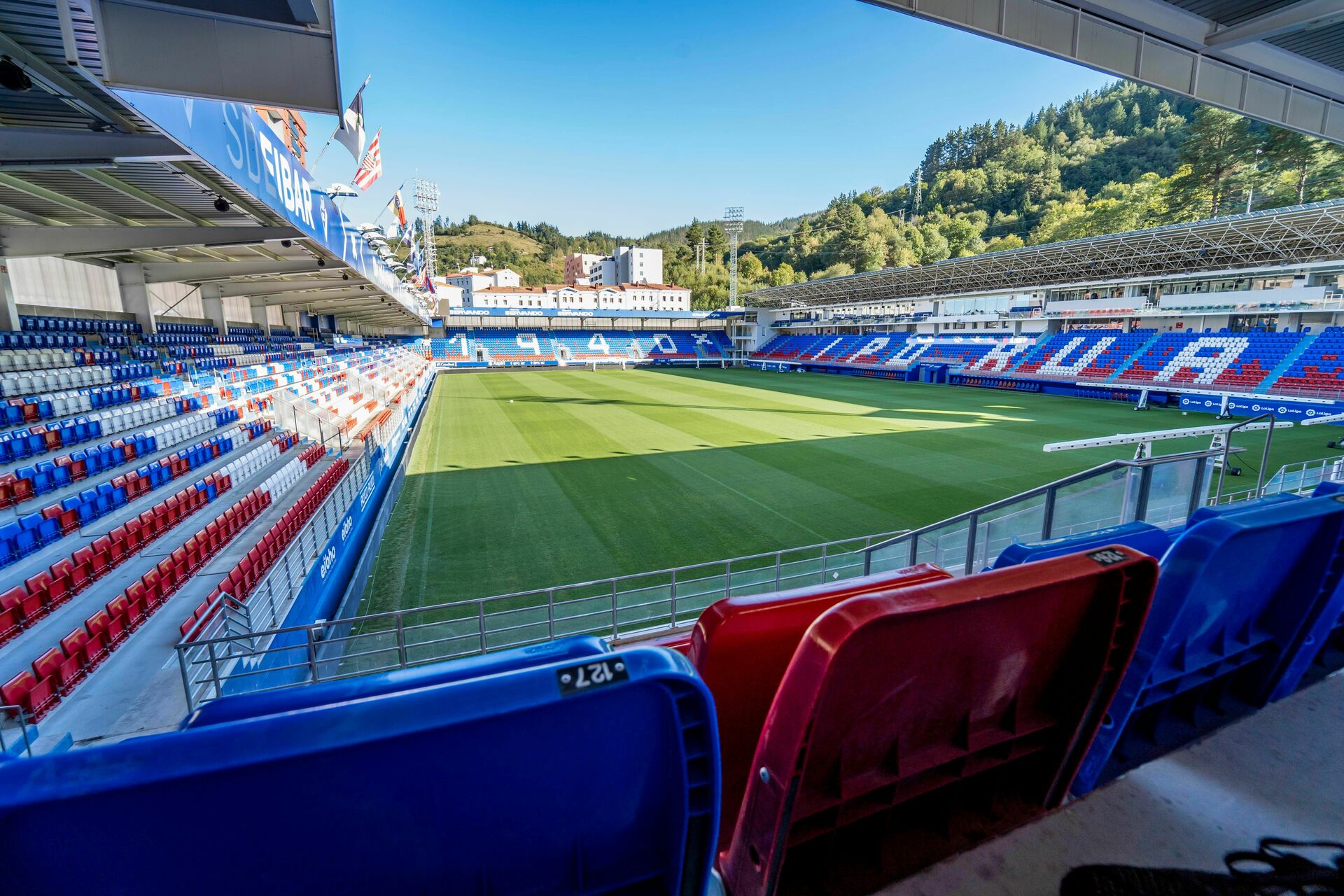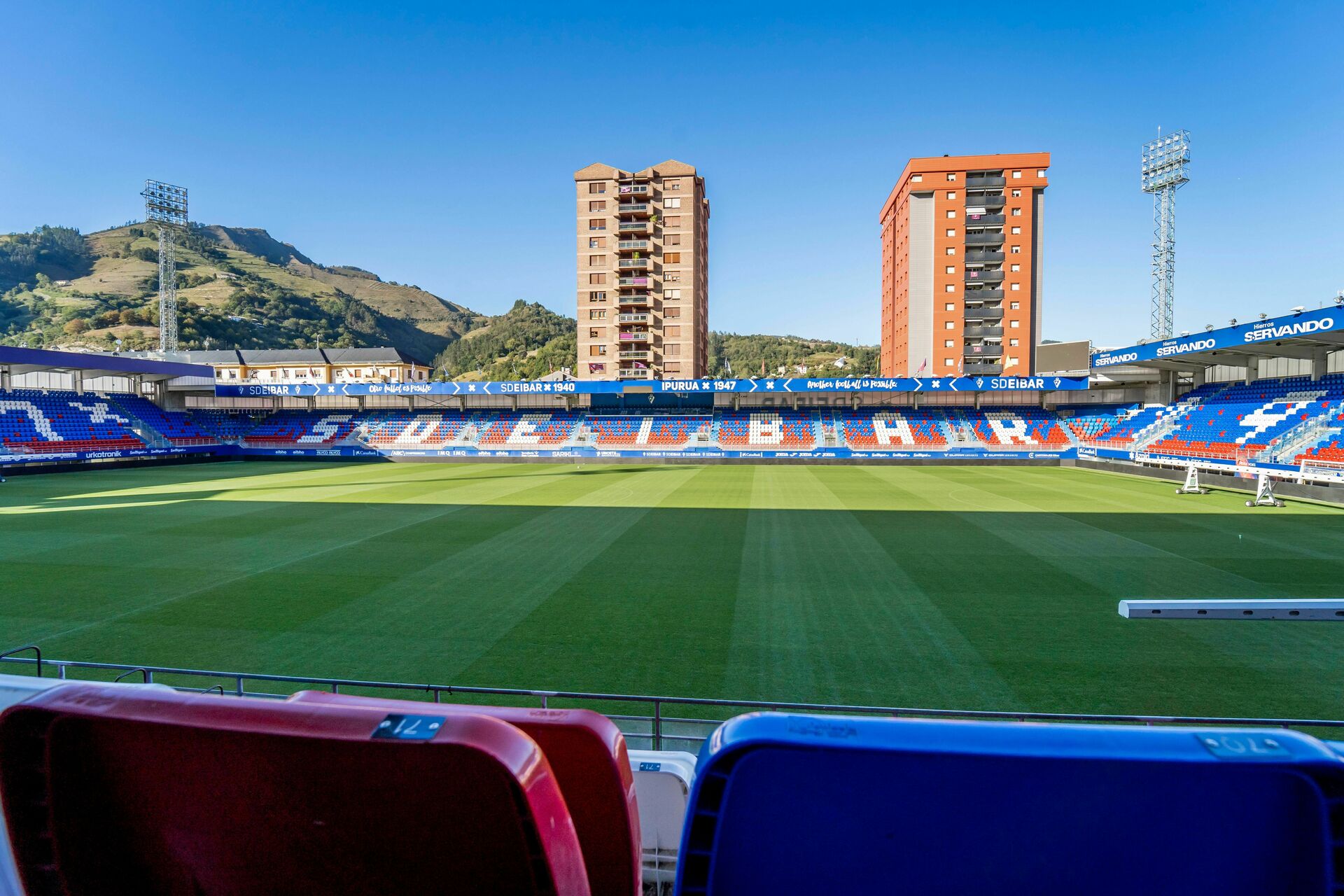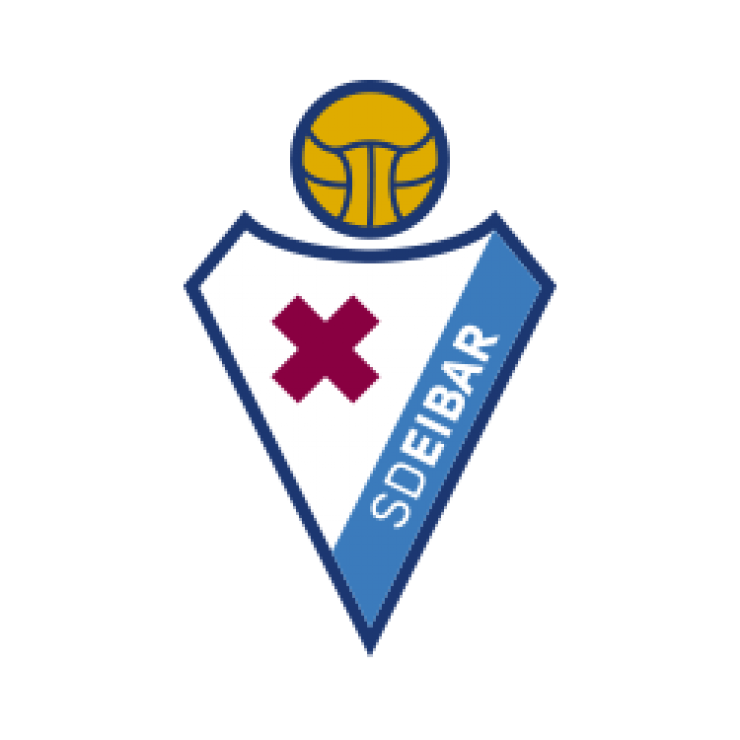Ipurua stadium
The Ipurua stadium will always be synonymous with the history of S.D. Eibar; its modifications and improvements have continued to reflect the upwards trajectory of the azulgrana club.
The Ipurua stadium was inaugurated on September 14th 1947 and, since then, has experienced drastic changes. Football existed as a popular pastime in Eibar for many years before the construction of Ipurua, and as such various other pitches were used for matches around the city.
The best-known venue was the Otola-erdikua ground, where many older clubs from the city embarked on their footballing journeys. S.D Eibar was consolidated by the mid-1940s and soon needed a place to call home which was worthy of their ambitions. This requirement was fulfilled in 1947 with the inauguration of the Ipurua field.

The inaugural match at the stadium was contested between S.D Eibar and C.D Elgoibar, the team´s main rival in this early period. This fixture, coincidentally, mirrored the first game of the Primera Regional season. Ironically, Eibar had played all of their “home” fixtures until this point in C.D Elgoibar´s home pitch, based in Irún, which laced the game with added historical significance. C.D Elgoibar emerged as victors on this occasion, with goals from Eulogio Echeverria and Ayesta in a 2-0 victory. Work began on Ipurua´s Main Stand in 1948 and was completed 3 years later. The drainage of the pitch in 1959 was problematic, and the club had to pay for the refilling, levelling and stabilisation of the ground. The budget for this operation was 428,000 pesetas, which was finally paid up in 1970. Additional work was carried out to the stadium itself during the same period, in which a covered roof was added to the sides of the Central Stand.
Floodlights would be used for the first time at the Ipurua stadium in 1970. The lights were first switched on for a friendly between Real Sociedad and Athletic Club de Bilbao, which marked the first edition of the Trofeo de la Amistad (Friendship Trophy).

In 1973 work was finalised on a new football pitch adjacent to Ipurua, which would play host to first-team training sessions and youth academy matches. The following year, an additional stand was constructed which backed onto the annexed pitch. An updated floodlight system was installed in 1989 after the previous system was deemed inadequate to sufficiently illuminate matches. The new floodlight system cost the club 16 million pesetas.
After 5 promotion challenges, Eibar was finally promoted to Segunda B in 1986 after defeating Coria del Río and Badajoz in the playoffs. This milestone achievement in the history of Eibar was delivered by the Bergara-born coach, Juan José Arrieta. During this period, a metal fence was installed around the perimeter of the Ipurua playing field, which cost the club 2.6 million pesetas.
S.D. Eibar´s trajectory reached its highest point in the 90s, in an era of substantial normative and structural changes. The influence of the Professional Football League was fundamental during this time, imposing a new Sanitation Plan over clubs in addition to the forced conversion of Second Division clubs to Public Limited Companies (PLCs). S.D. Eibar received a financial grant from the Superior Sports Council and the Professional Football League to assist with the remodeling of Ipurua. It was a stadium that, despite its character, required updating in almost every conceivable area.
In the summer of 1988, the club embarked on construction work on the new Central Stand and extensions of the East and West stands, known as “The English Stand” and “La Bombonera” respectively. In 1999 the General Stand, now known as the North Stand, was knocked down to allow for a series of improvements to be made. This stand was to remain empty throughout the course of the 1999-00 campaign to allow for uninterrupted construction work, ensuring that fans could return for the start of the 2000-01 season.
The pitch was once again remodeled in the summer of 2000 with the installation of a new drainage system and the introduction of automatic sprinklers. Ipurua´s facilities abide by each of UEFA's security regulations. The pitch measurements are 103 meters in length by 65 meters in width.
Over the course of the last few years, the North and East Stands have been knocked down and rebuilt, which has served to make the stadium more modern, safe, and accessible, whilst boosting its capacity to 7,083. Spectators all have their own individual seats, as dictated by UEFA regulations. Furthermore, new spaces have been created, which, amongst other things, has allowed for the opening of the training classrooms which host the official coaching courses and the diploma in the management of football clubs, which is run in collaboration with the University of the Basque Country.
